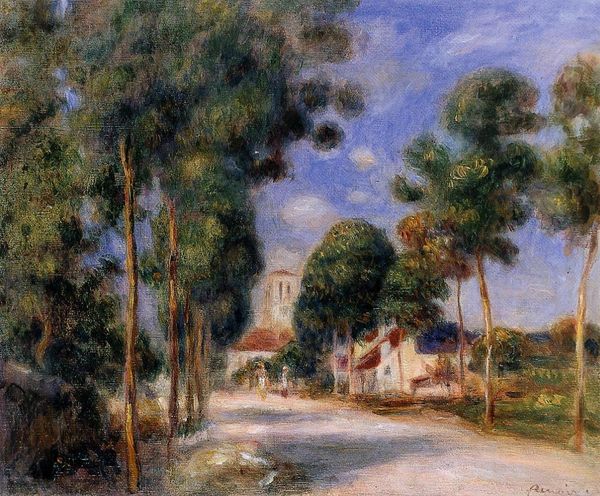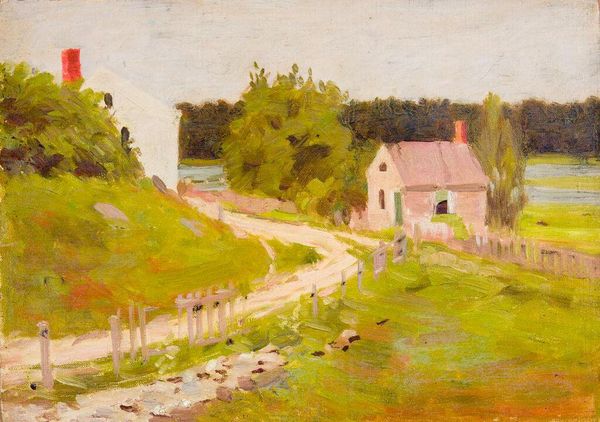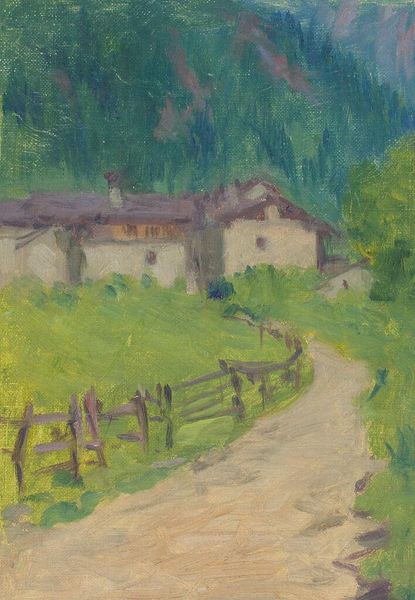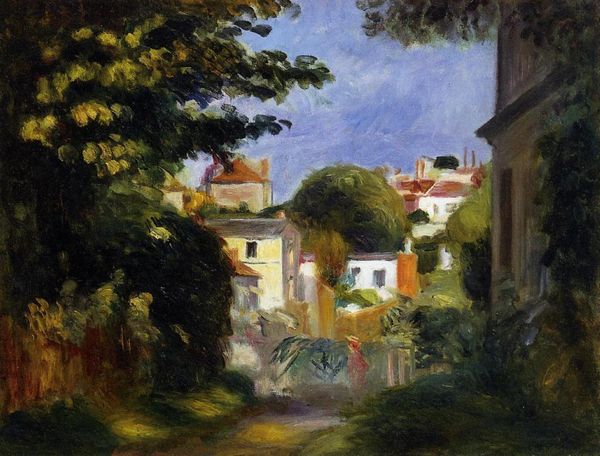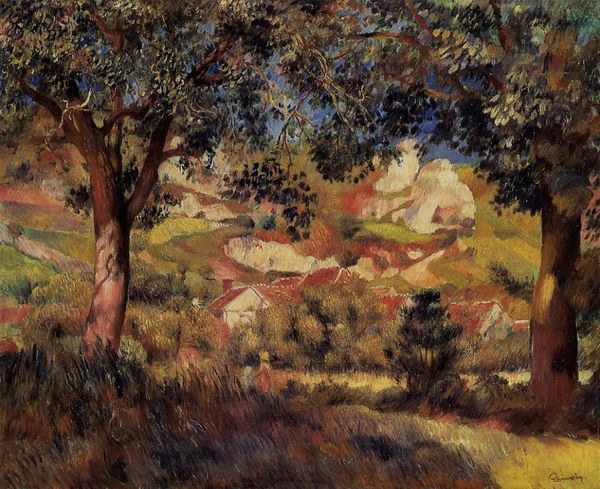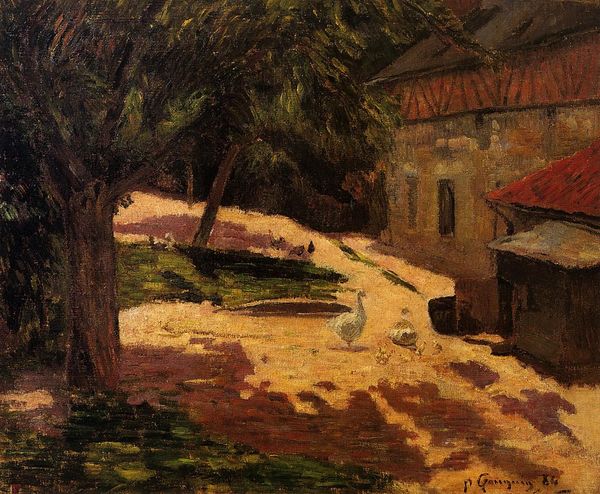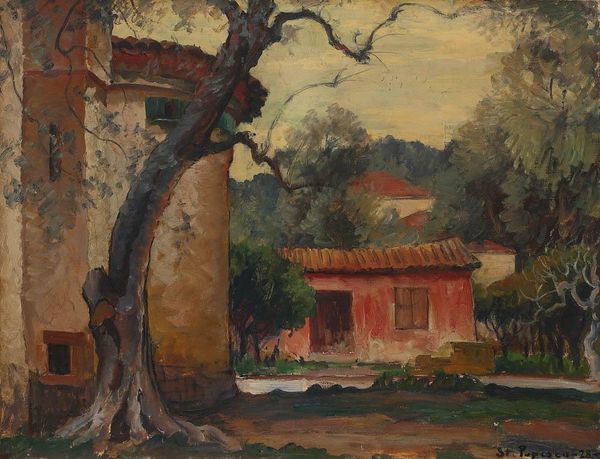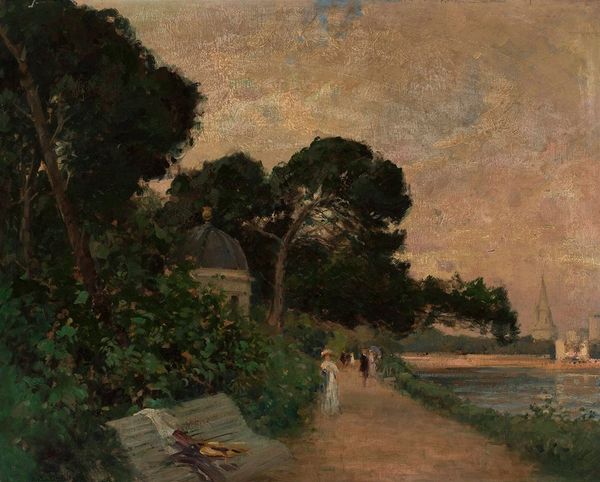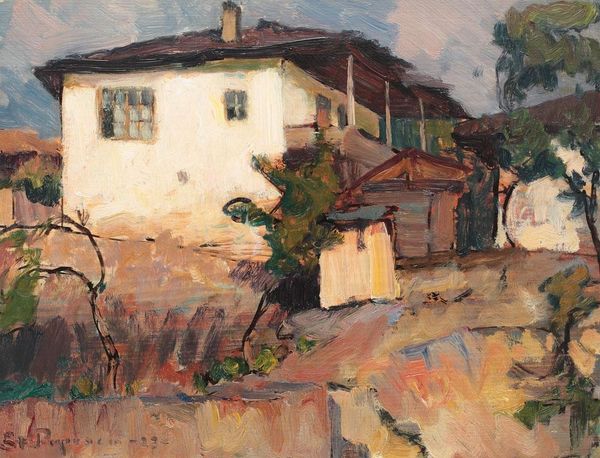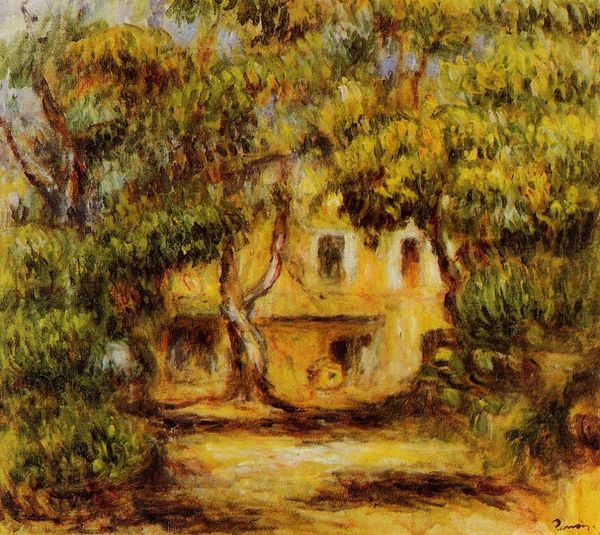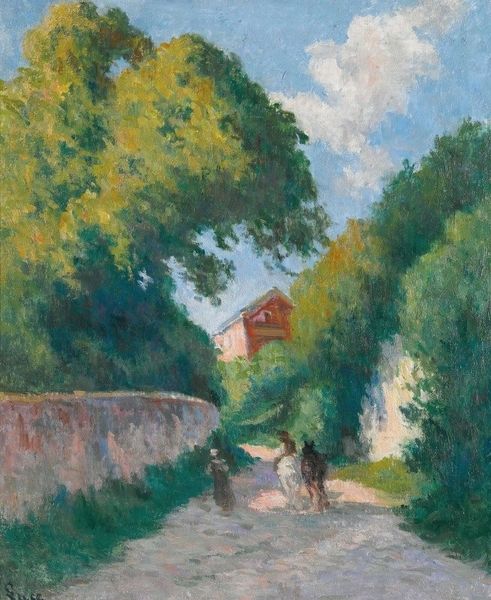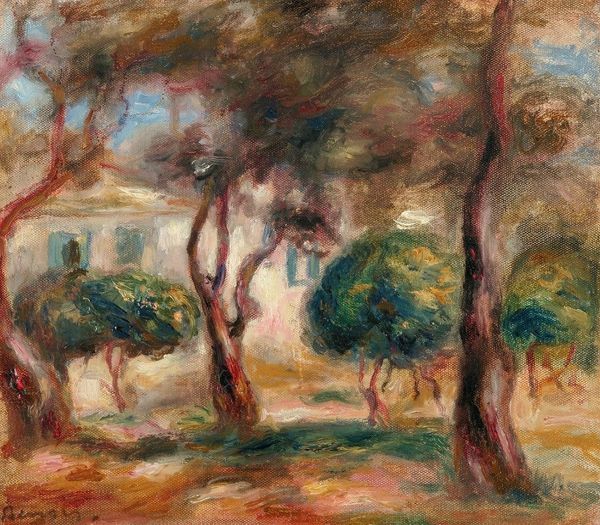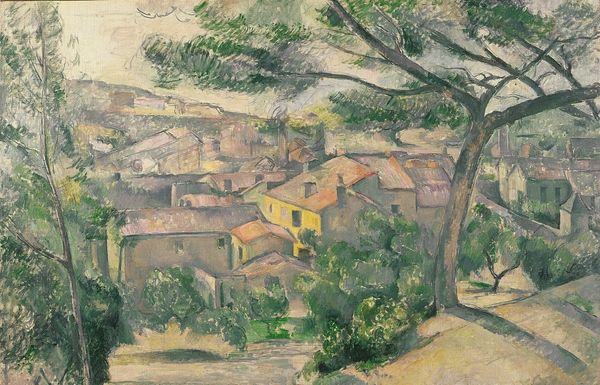
painting, plein-air, oil-paint
#
painting
#
impressionism
#
plein-air
#
oil-paint
#
landscape
#
impressionist landscape
#
oil painting
#
cityscape
Copyright: Public domain
Curator: "Houses on the Hill" by Stefan Popescu is rendered in oil paint, capturing a hazy, sun-drenched scene in a distinctly Impressionistic style. What are your initial thoughts? Editor: It’s surprisingly peaceful. The subdued color palette, mostly greens and browns, gives it a sense of quiet isolation, like a world tucked away from everything else. There is no struggle! Curator: Indeed, Popescu employs a plein-air technique, suggesting it was painted outdoors, likely on site. The rapid, broken brushstrokes are consistent with capturing a fleeting moment. The hazy light and how it bathes the scene contributes to the sense of peace. Do you think that peace reflects something of the world he was living in or his reaction to it? Editor: It’s interesting you mention that, because the late 19th and early 20th centuries, when Impressionism flourished, was a period of rapid industrialization and urbanization. Could this image of idyllic rural life, as you've hinted, reflect a longing for a simpler past, perhaps an idealized past that contrasts sharply with that rapid change? It would mean more with date confirmed. Curator: Perhaps, and within the composition itself, the houses peek through a veil of trees and foliage, half-hidden, suggesting a desire to be apart, even protected, by nature itself. Consider, also, the simple construction of these houses, their modest size and humble materials that can mean something on it’s own. There is little or no industrial or city influence at all. Editor: I see your point. In contrast to imposing urban architecture, these homes look organically integrated with their environment. They mirror an architecture which arises from a particular historical conditions. I wonder what type of person inhabited it. Curator: The buildings here serve as both shelter and emblem, possibly symbolizing community resilience and close connection to land and custom. You almost wonder how they got here to start with! Editor: This landscape becomes a repository of shared cultural memory—each visible element resonating as an embodiment of the traditions that shape its form and function. It is a nostalgic painting for a landscape tradition that did, or didn't, really existed. Thanks, that was illuminating! Curator: My pleasure, it's these quiet paintings that allow us to reconsider what memory we are building for tomorrow!
Comments
No comments
Be the first to comment and join the conversation on the ultimate creative platform.
